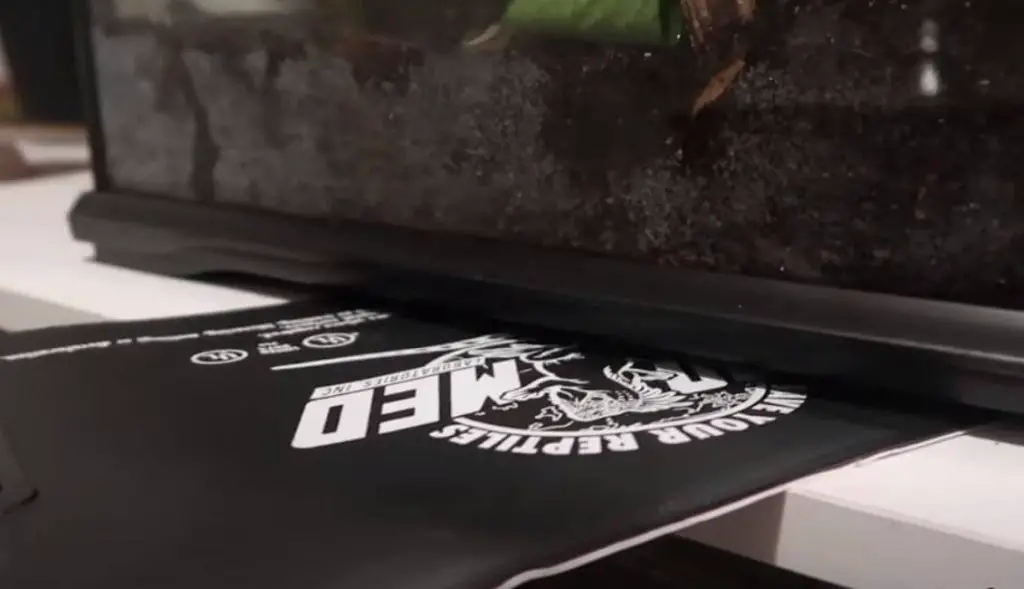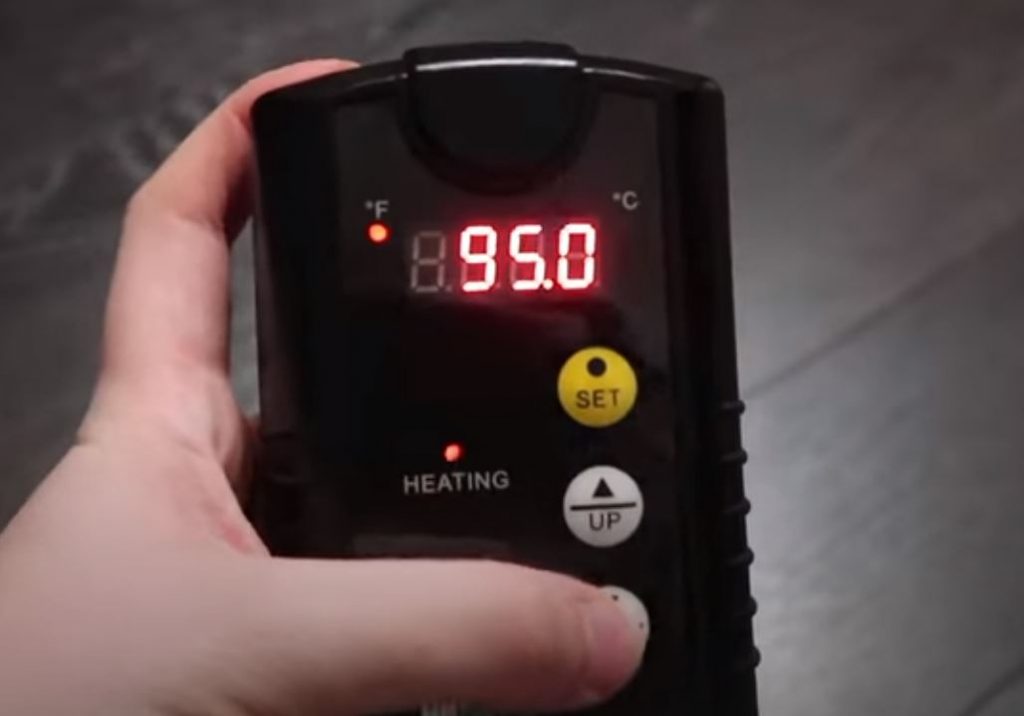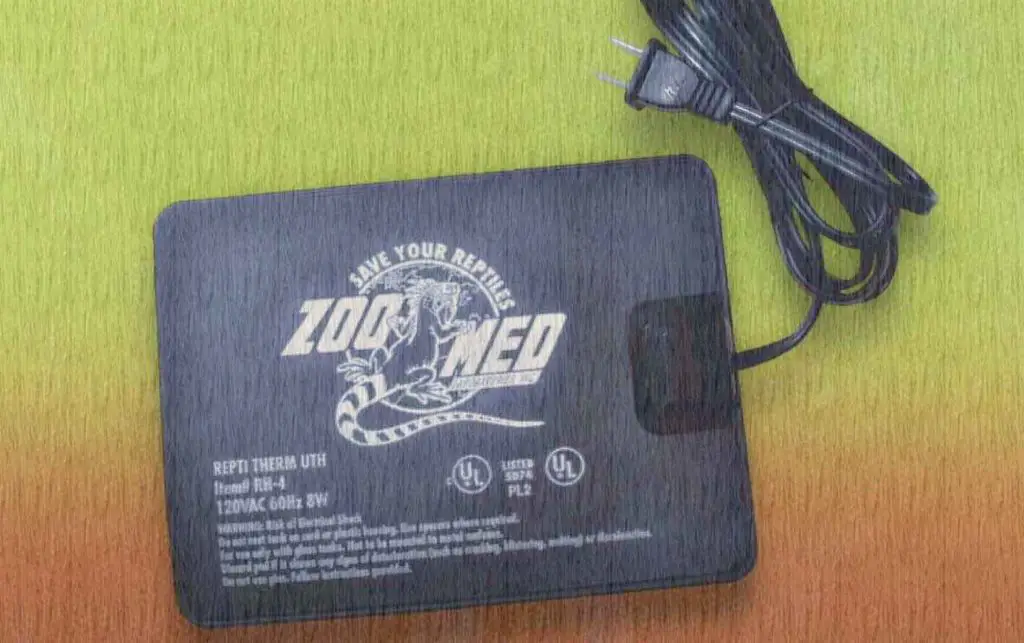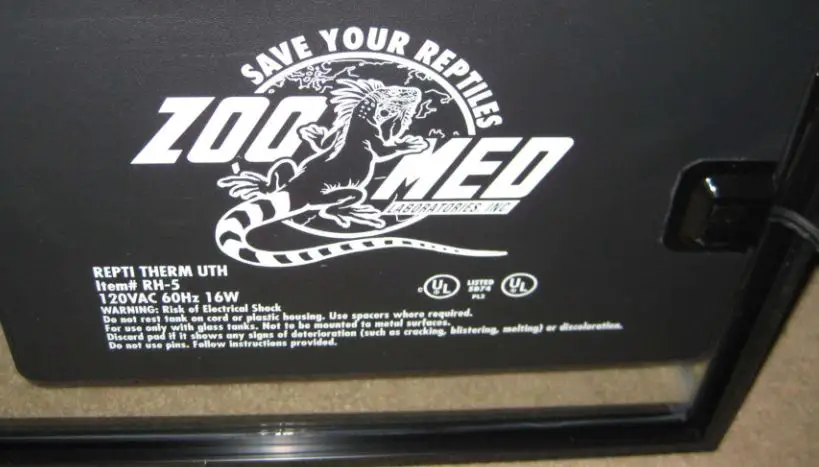I am sure you are wondering: Are reptile heating pads safe? Good question!
Reptiles are cold-blooded creatures, so they rely on external sources of heat such as heating pads to regulate their body temperature.
Under-tank heaters are a great way to provide supplemental heat and regulate the temperature in your pet’s enclosure.
They are also very affordable. However, not all under-tank heaters are created equal, so you must do your research before you purchase one for your pet.
When considering an under-tank heater, make sure it is made for reptiles (e.g., marketed as such), compatible with a thermostat (to avoid overheating), and the right size and wattage for your tank.
Related Posts:
- Can a Reptile Survive Outside?
- Reptile Tank Setup
- What Happens If a Reptile Gets Too Cold
- How Much UVB Does a Reptile Need?
Are Reptile Heating Pads Safe?
Yes, reptile heating pads are safe. In fact, heating mats are a great way to keep your pet’s tank at the right temperature.

You can use one under the tank, on top of it, or near it. But make sure that you purchase one that is made for reptiles and has all of its specifications in mind, like compatibility with thermostats!
How to Use Reptile Heating Pads Properly?
Reptile heating pads are thicker, have a higher wattage, and are usually made of silicone.
These are important for safety reasons as they are able to maintain the proper temperature, unlike other heating pads that can’t keep up with changing temperatures.
Using an incorrect pad could cause your reptile’s tank to burn or even kill them!
Where Should You Place Reptile Heating Pads?
Be careful when using under-tank heaters in combination with glass tanks, because this type of heater emits infrared rays that may crack the bottom of your aquarium.
For these types of enclosures, use over-the-tank heaters like terrarium hoods instead.
Be sure not to place anything on top of your enclosure since it will insulate the surface from getting heated properly by the UV or basking bulb depending on the type of reptile you are caring for.
What Should You Consider When Buying Reptile Heating Pads?
The right size and wattage are important factors to consider when purchasing your heating pad.
Most reptiles require a low-wattage heater since they are cold-blooded animals who rely on their environment to regulate body temperature.
If the proper heat isn’t maintained, it could cause serious health problems or even death!

For this reason, most under-tank heaters are designed with separate controls so that you can set them at different temperatures according to what species is housed inside each enclosure.
But be sure not to use more than one heater per habitat unless otherwise specified by the manufacturer’s instructions.
How Can You Ensure Reptile Heating Pads Are Safe?
Some reptile heating pads have been recalled because of fire hazards and overheating. The best way to avoid these issues is to make sure the under-tank heater you are using is compliant with all federal safety regulations.
If it doesn’t have a UL label, don’t use it!
Reptile heating pads should only be used as necessary for warmth and not left on 24/7 unless specified by your veterinarian or the pet shop staff.
This will help prevent burns, overheating, fire hazards, and other injuries that could otherwise occur if they are overused.

Reptile heating pads are safe when used properly, which means checking them frequently for any signs of damage including dark spots or discoloration.
When in doubt, take the pad out of the tank.
Where Should You Store Reptile Heating Pads?
If they are ingested, it could be fatal.
Reptile heating pads are not toys and should never be left where children or animals might ingest them accidentally.
Keep them on a high but reachable shelf in the same room as your reptile habitat so you can monitor their use closely for any changes.

For these reasons, do not purchase an under-tank heater without doing some research first.
Check reviews online, ask your pet shop staff what they recommend based on experience with different brands and models, and read up about how each one works before purchasing one yourself.
If you do decide to use a reptile heating pad, make sure it is in an area where children and pets cannot reach it.
Will All Heating Pads Work for All Kinds of Reptiles?
Do all types of reptiles require different temperatures?
Reptiles are cold-blooded, meaning they obtain their body heat from their immediate environment. But not all of them are the same.
The type of heating source that will work for them depends on whether the reptile is diurnal or nocturnal.
Diurnal reptiles are active during the day, and nocturnal reptiles are active at night.
If you use a heating element for diurnal animals to heat up a cage that is meant for nocturnal animals, your pet could literally cook itself from the inside out.
I don’t think this would kill the animal but it wouldn’t make for a very happy reptile!
Conclusion
Reptile heating pads are an eco-friendly way to keep your reptile warm.
They use less energy than other methods and don’t create any harmful emissions or toxins in the process of warming up.
I hope this blog has helped you decide if a reptile heating pad is right for your pet.
Feel free to contact us with any questions you might have! We are happy to answer them for you!
Key points to remember when considering if reptile heating pads are safe:
Reptile heating pads, also known as under-tank heaters, can be a valuable tool for maintaining the appropriate temperature in your reptile’s enclosure. However, their safe and effective use depends on several factors. Here’s what you need to know about reptile heating pads:
Key Considerations for Using Reptile Heating Pads:
- Heat Regulation:
- Reptiles are ectothermic, which means they rely on external heat sources to maintain their body temperature. Heating pads help create a suitable thermal gradient within the enclosure.
- Temperature Control:
- It’s crucial to have a thermostat or temperature controller to regulate the heating pad’s temperature. This ensures that the pad doesn’t become too hot and harm your pet.
- Proper Placement:
- Position the heating pad on the outside bottom of the enclosure to avoid direct contact with your reptile. This setup prevents burns or injuries.
- Thermal Gradient:
- Reptiles require a thermal gradient in their enclosure, with a warm basking spot and cooler areas. The heating pad contributes to the warm end of this gradient.
- Safe Substrate:
- Use a suitable substrate that won’t melt or conduct too much heat, potentially causing harm to your pet. Consult care guides for specific reptile substrate recommendations.
- Monitoring Temperatures:
- Regularly check the temperatures in various areas of the enclosure to ensure they are within the appropriate range for your specific reptile species.
Safety Precautions:
- Thermostat Use:
- Always pair a heating pad with a reliable thermostat to prevent overheating. Ensure the thermostat’s probe is appropriately positioned to monitor temperatures accurately.
- Avoid Direct Contact:
- Reptiles should never come into direct contact with the heating pad. Use a heat-resistant barrier like a heat mat or insulation board to prevent burns or injuries.
- Installation:
- Follow the manufacturer’s installation instructions carefully to ensure the heating pad is securely affixed to the enclosure’s exterior.
- Pet-Specific Needs:
- Different reptile species have varying temperature requirements. Research the specific needs of your pet to provide the right heat source and setup.
Common Misconceptions:
- Reptile heating pads are not a one-size-fits-all solution. Each species has unique temperature preferences, and it’s essential to tailor the heat source to your pet’s needs.
- Using a heating pad alone may not suffice for all reptiles. Supplementary heat sources, such as basking bulbs or ceramic heat emitters, may be necessary to create the appropriate thermal gradient.
Conclusion:
Reptile heating pads can be safe and effective when used correctly, provided you follow temperature guidelines, use a thermostat, and ensure your pet cannot come into direct contact with the pad. It’s essential to understand the specific requirements of your reptile species and maintain a suitable thermal gradient in their enclosure. Proper temperature regulation is crucial for the health and well-being of your cold-blooded companion.
Further Reading:
- Can a Reptile Survive Outside?
- Reptile Tank Setup
- What Happens If a Reptile Gets Too Cold
- How Much UVB Does a Reptile Need?


